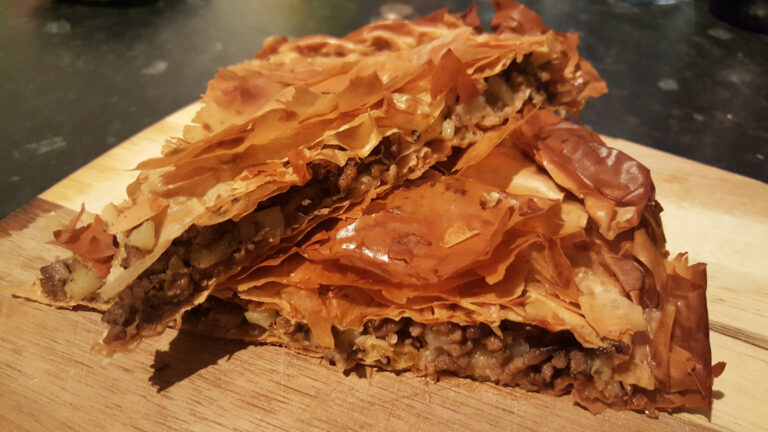Introduction: Exploring Albanian Snacks
Snacks play an essential role in Albanian cuisine, and they are often enjoyed throughout the day between meals. Albanian snacks are diverse and reflect the country’s rich culinary history and cultural influences, including Turkish, Mediterranean, and Balkan flavors. They are popular among locals and tourists alike, and many of them have become iconic dishes that represent the country’s food culture.
Traditional Albanian Snacks: A Brief Overview
Albanian snacks are usually savory and often served as an appetizer or a light meal. They range from pastries, meatballs, and dips to soups, salads, and sandwiches. Albanian snacks are typically made with fresh and locally sourced ingredients, and they are often handcrafted with traditional methods. The preparation of these snacks is considered an art form, and many Albanian families have their own secret recipes that have been passed down from generation to generation.
Burek: The Iconic Albanian Pastry
Burek is one of the most popular Albanian snacks, and it is a savory pastry filled with meat, cheese, or vegetables. It is often served as a breakfast food or a snack, and it is a staple in Albanian cuisine. Burek is made by layering phyllo dough and filling it with the desired ingredients, then baking it until crispy and golden. It is usually served hot, and it is often accompanied by a yogurt-based dip called “tarator.”
Byrek: Another Popular Albanian Snack
Byrek is a pastry that is similar to burek but is usually smaller and filled with different ingredients. It is often served as an appetizer or a snack, and it is a favorite among Albanians. Byrek can be filled with cheese, spinach, potatoes, or meat and is usually baked until golden brown. This pastry is perfect for those who want a quick and flavorful snack on the go.
Flija: A Unique Layered Albanian Dish
Flija is a traditional Albanian dish that is made by layering thin pancakes and filling them with cheese, yogurt, and sometimes meat. It is a labor-intensive dish, and it is usually prepared for special occasions and celebrations. Flija is cooked over an open fire, and it takes several hours to prepare. This dish is unique to Albania, and it is a testament to the country’s culinary heritage.
Qofte: A Traditional Albanian Meatball Snack
Qofte is a traditional Albanian meatball that is often served as a snack or a light meal. It is made with ground meat, onions, herbs, and spices, and it is usually grilled or fried. Qofte can be eaten alone or with a side of bread or salad, and it is a flavorful and satisfying snack that is loved by many Albanians.
Rakia: The Famous Albanian Brandy
Rakia is a type of brandy that is popular in Albania and other Balkan countries. It is usually made from fermented fruit, such as grapes, plums, or apples, and it is considered a traditional Albanian drink. Rakia is often served as an aperitif or a digestive, and it is a favorite among Albanians. It is usually consumed in small glasses, and it is a perfect accompaniment to Albanian snacks.
Conclusion: The Rich and Diverse World of Albanian Snacks
In conclusion, Albanian snacks are an essential part of the country’s culinary culture, and they reflect the diverse influences that have shaped Albania over the years. They are handcrafted with traditional methods and made with fresh and locally sourced ingredients, and they are a testament to the country’s rich culinary heritage. Whether you are a local or a tourist, Albanian snacks are a must-try, and they are sure to satisfy your taste buds.

